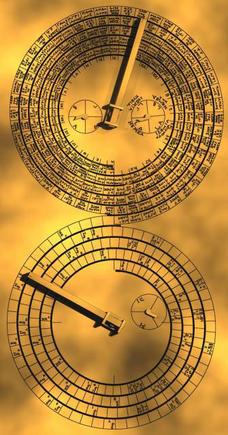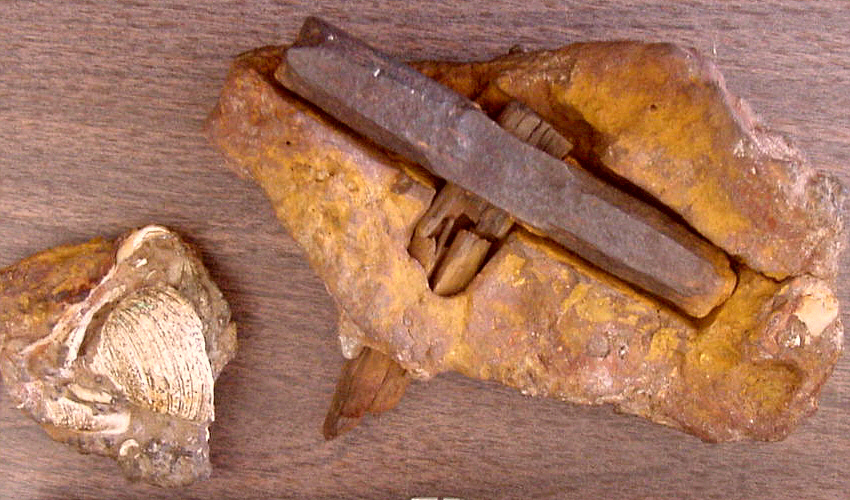I am something of an advocate for William Paley’s famous (but admittedly flawed and allegedly “debunked”) Watchmaker analogy, as this previous article titled “A Blind Rock Maker?” should establish. As my previous article stipulates, the problem with the analogy is not natural selection, or that the idea of design is nothing more than a beguiling illusion, but in the mistaken notion that the rock itself might have always existed. We now know (or think we know) our universe had a beginning, and the rock simply couldn’t have existed forever. Even the rock had an origin.

Today we have a new hypothetical scenario: what if we stumble across a stone in the forest (or, in the case, at the bottom of the ocean) that on closer inspection, appears to have sophisticated wheels and machinery for some strange, unknown purpose?
The image above is a computer-generated replica of the back panel of the Antikythera device, discovered by sponge divers in a rock found among wreckage from a shipwreck located offshore from the Greek island Antikthera in 1900. The mechanism is truly extraordinary, and appears to have been designed to track (among other things) the Metonic cycle, a period of every nineteen years during which the reoccur at the same time of year, and the movement of the five known planets at the time. The inner workings are composed of at least 30 gears with a precise number of teeth less than two millimeters long. One of the gears even has a small pin slot that adjusts for a period of hours before turning the gear. The device is able to predict lunar and solar eclipses to the day and the hour, tracked the Ancient Olympic Games as well as less well known athletic events. It even tracked the Callippic cycle, which is comprised of four Metonic cycles. The months are written with Egyptian names but in ancient Greek. It’s a very strange, but ingenious mechanism.
The Antikythera device is about the last thing you’d expect to find while walking through the woods, or swimming in the sea. It existed long before Jesus walked the Earth but according to some of the New Atheists, when Jesus lived, the vast majority of people were illiterate sheepherders who could neither read nor write. So how did such a complex device come to exist more than 1500 years before astronomical clocks became popular? Why were people barely able to live 76 years interested in keeping track of cycles that long? What was so important about keeping such meticulous track of solar and lunar eclipses? We will probably never know.

Like the famous “London hammer” found in London, Texas, in 1936, the Antikythera device seems to be out-of-place, an artifact that doesn’t belong where it was discovered. It is unquestionable proof of (human) intelligent design. We know the rock is natural — but is it probable? Should rocks exist?
If you are interested in physics and cosmology like I am, you’ll learn that scientists don’t really think rocks ought to be here. Nothing should be here. No person, place, or thing. Nothing should exist, if you believe in the concept of odds and the laws of statistical probability. Not a person, place, or a thing. The Big Bang was a highly improbable singularity, and the odds against cosmic inflation and abiogenesis don’t improve over time, they only get worse. Much, much worse.
Yet a human being made the Antikythera device — an extraordinarily intelligent human being, but a human being nonetheless. An intelligent human being made the London hammer, too, even though it is allegedly encased in rock estimated to be more than 400 million years old, a date so old it made some Christians bold enough to claim the hammer was an antediluvian artifact that became encased in sedimentary rock formed during Noah’s global flood. I don’t think the rock is even that old, because the hammer isn’t that old. It has been dated within the past 700 years.
But that’s my point…even these rocks haven’t always existed. Nothing in this universe has always been here. Statistically speaking, it shouldn’t be here. Nothing should exist, especially if the laws of probability had anything to say about it. No plants, no animals, no rocks, no trees, no hammers, no people, and no Antikythera devices. Nothing means nothing.
Yet we do exist. By design.

Speak Your Mind